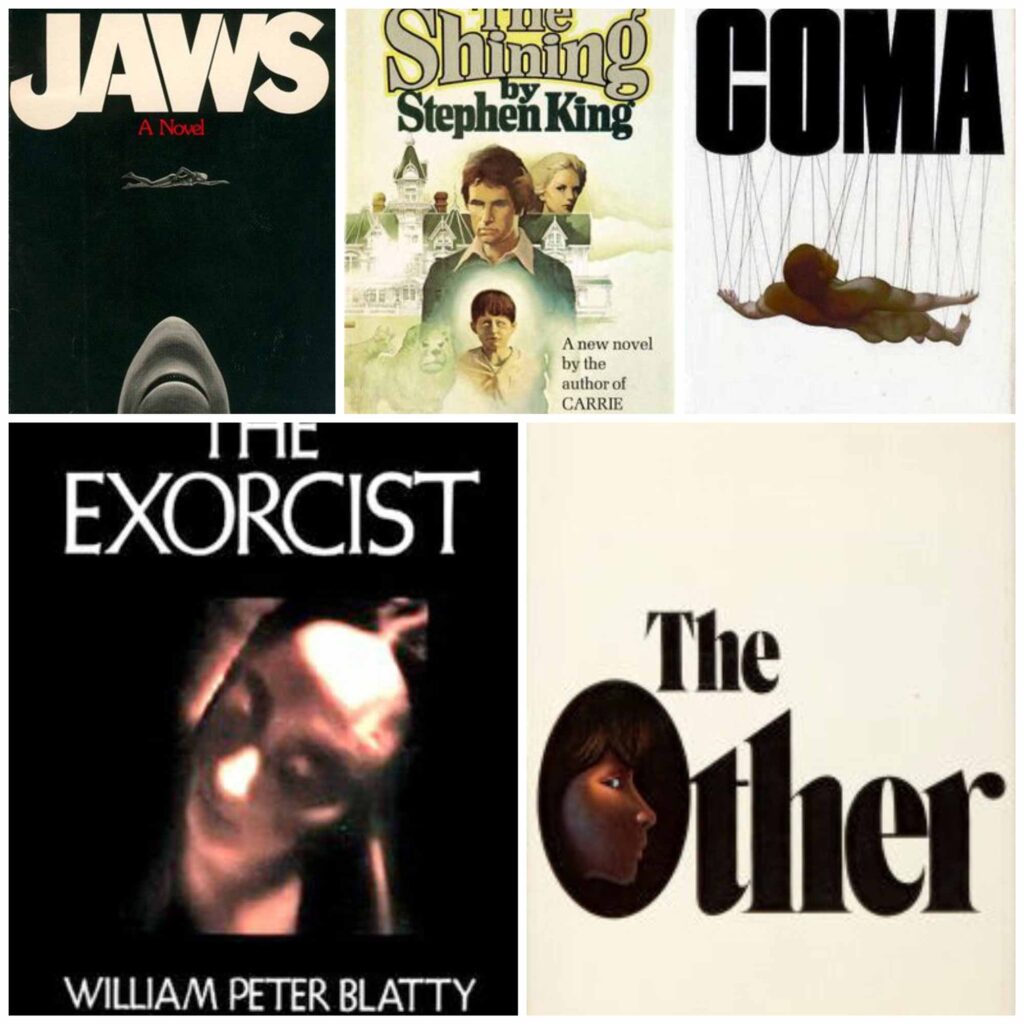
Introduction to 5 Novels from the 1970s
The 1970s was a decade of change and upheaval for the United States. With the Vietnam War still raging, protests spilling from campuses onto the streets, and a new brand of vitriol brewing in politics, the unruly decade saw the emergence of some of the most exciting and anxiety-producing novels of all time. From horror to medical thriller, psychological horror to monster genre and demonic possession, these five books are now in their prime, young grandparents to other genre books in current release. To help you choose what to read in this decade, we’ve reviewed these five novels from the 1970s. Read on to find out more about each one and decide for yourself which book you will move to the top of your TBR stack.
What are the 5 novels from the 1970s being reviewed?
If you’re looking for a novel that will keep you up reading past bedtime, then you should check out all five novels from the 1970s being reviewed in this article. Each of the novels is a prime example of their genre and will keep you anxiously turning pages from beginning to end. If you’re a fan of classic ghost stories, then you should read The Shining, an early Stephen King novel which cemented his place as a major horror writer. In the novel Coma, a woman medical student becomes obsessed with discovering why healthy patients are falling into comas. If you’re a fan of psychological thrillers, then you’ll love The Other about a young boy and his sociopathic twin brother. If you want to read a modern-day take on the monster genre, you must devour the novel Jaws. And if you’re in the mood for a classic novel of demonic possession, then you must give The Exorcist a read. We’ll go into each book in our reviews below.
COMA, by Robin Cook (1977)
During the 1970s, a backlash against feminism eroded support for the Equal Rights Amendment, which ultimately failed to achieve ratification (in the 20th century). President Richard Nixon also signed a bill that created HMOs. Soon, health maintenance organizations would transform medicine into a profitable joint venture. Author Robin Cook may have been angry at the failure of the ERA. He may also have experienced the societal mistrust engendered by the complete privatization of medicine for profit. Suddenly, on paper anyway, the dollar was more important than the patient, and the Constitution only guaranteed that men had inalienable rights. The female character at the heart of the novel Coma, Susan Wheeler, a medical student, is a well-rounded character—persistent, smart, vulnerable and yet determined to uncover the forces that are putting young, healthy patients into comas. The heroine’s unshakeable moxie and determination in the face of institutionalized powerlessness, combined with the author’s unforgiving portrayal of a corrupt medical system, struck a nerve and proved to be exactly what readers wanted. Just after the mid-point of the decade, the novel Coma erupted onto bestseller lists. In the process, author Robin Cook created a whole new genre—the medical thriller. Coma is edge-of-your seat reading. Though it’s sprinkled with medical jargon that tamps it down, the narrative is as relentless as the heroine’s strides as she runs from her would be assassins. Several exciting sequences and chases await you, and a violent confrontation inside a cadaver freezer will haunt your waking and sleeping (and comatose) hours. Don’t wait. Read Coma!
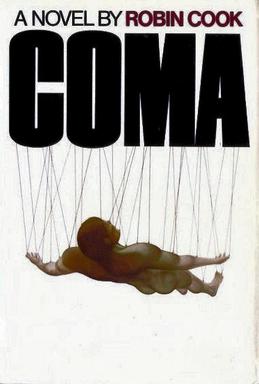
THE OTHER, by Thomas Tryon (1971)
The violence that tore open the last two years of the 1960s left the country fully cut in two, each side certain that the actual monsters in the world lurked behind the other’s increasing instability and toxicity. Thomas Tryon’s novel The Other is the oldest of these five books and is a short, moody, and horrifying read. Like the decade this book was born into, the twin boys at the center of this novel (and their mother) are recovering (reeling?) at their family estate from their father’s recent, untimely and possibly violent accidental death in the thresher room of his barn. Tryon’s third-person narration is framed by first and last chapters that use a first-person narrator—the nice twin, a young, helpful and sensitive boy who must contend with his identical twin brother’s increasing propensity towards sociopathic hostility. The film doesn’t touch the hypnotic spell this novel weaves. It won’t matter if you turn several lights on for this read because the horror lurks not only in the shadows but also in the bucolic setting and light-of-day kindness and charity of its main character. My best advice is to drink a glass or two of red wine before you get too far into the book because you won’t want to drink red wine for a long while after you’ve finished this book. Don’t beat around the wine barrel; read The Other for a full immersion into vintage psychological horror.
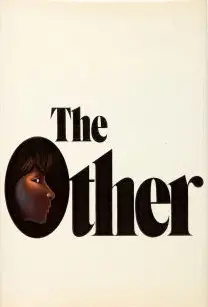
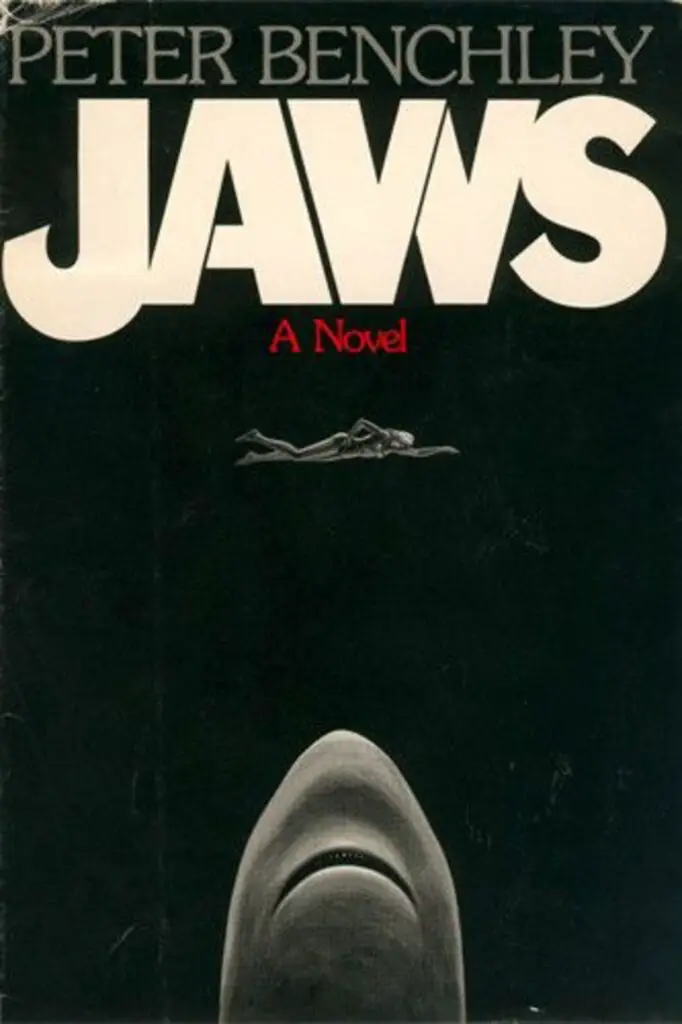
JAWS, by Peter Benchley (1974)
We’re gonna need a longer day. I literally stayed up all night into the morning to read this book in one sitting. During the 1970s, the consequences from decades of environmental abuse and neglect brought to the fore that nature was angry and would wreak its vengeance. People were realizing how powerful and untamable a force nature could be, and that there was no defense because the monster literally surrounded them. As immature as children who have broken a parent’s favorite vase, people shrank away from their neglect, hoping to hide but certain they could not evade the bloody side of vengeance when it eventually bit. Sheriff Brody, the character at the center of the vortex in the novel Jaws, can’t swim and he hates the water; he is oblivious to his wife’s extramarital affair; though a grown man, the Sheriff for all intents and purposes is as young a boy as the twins from The Other or Danny Torrance from The Shining. The breakneck pace of the novel Jaws feels like you are being pulled through the water by a fast boat. You may have seen the blockbuster Steven Spielberg film, but much happens in the book that didn’t make it to the screen. And one character who survives in the movie, dies in the book. You can only tread water for so long. Dive in. Read Jaws!
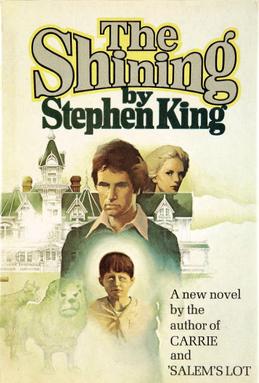
THE SHINING, by Stephen King (1977)
The end of the decade flirted with a new hope. In the winter of 1977, a humble peanut farmer elected President and his wife held hands and walked down Pennsylvania Avenue with thousands of onlookers only mere feet away from them. But the traumatized decade could not embrace such hope and simplicity without giving full license to a growing public unease. The public seemed shrouded in a collective guilt over a deeply troubled and bloody history, and the novel The Shining exposed us to that internal turmoil and bleeding made manifest. The novel shook people, indelibly, to the core, turned their worlds inside out, and convinced millions that their own ghosts were real. The excitement that surrounded this novel was so palpable that any mention of the book usually occurred in rushed whispers between fellow horror addicts afraid that if they were too loud, the ghosts in the book would, as they do to the lead character, Jack Torrance, compel them to madness and murder. You must read The Shining, the whispers urged. Don’t ask me why, just read it! This extremely frightening novel delivers on every promise ever made about it. The book churns into a breakneck speed, as if the narrative were an avalanche of blood-stained snow barreling down the mountain towards the characters trapped in the novel’s haunted hotel. There is no hedge maze here as in the Stanley Kubrick film, but there are things more horrifying and terrifying waiting for you. And they all chase you! Why look, isn’t that a ghost sitting there beside you? You know what shining means: read my mind: you must read the novel The Shining.
THE EXORCIST,
by William Peter Blatty (1971)
Never before in the 20th century had this country been split so deeply asunder. Yet never before had there been a certainty that positive action by the citizens could bring a corrupt war to an end. If people fought bravely and honorably and civilly, and invoked each other’s inherent goodness, they could banish the evil that had possessed their country and the body politic. Never seems to be a word that surrounds this novel. So much of what happens in the book was unprecedented in mainstream, popular fiction. Never had a bestseller exploited such scenes of violence—sexual violence—towards a minor, and never had sacred religious elements been subverted at the altars of shock, profanity, violence, and sex. The author said the novel was based on a factual account, and he wrote the book using a terse, factual, journalistic style. People who read this novel were driven into a state of horror. All norms were insulted. The sometimes blunt and news-like cadence of the book’s sentences makes this story feel very real, not fiction at all but a news piece, a non-fiction, non-judgmental, objective third-person account of a young girl’s possession by a demon. The author breaks into a good impression of Raymond Chandler’s noir mystery when he spends time with the character Inspector Kindermann. But these sections provide breathing space, comic relief against the palpable horror as this novel creeps up behind you, pinches you, takes hold of you, and then smothers you with Grand Guignol! There are plenty of horrifying surprises in store for you if you’ve only seen the William Friedkin film. Suffice to say, I won’t bend over backwards in two and chase you, my furry tongue flicking at your Achilles heels. The power of reading compels you! Read The Exorcist!
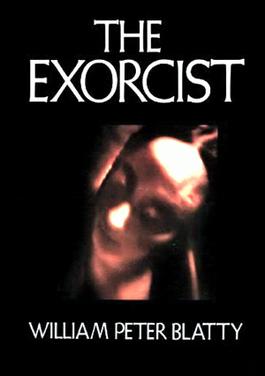
Are any of these novels more worthy than others as classic reads?
All the novels on this list are worth your time and attention, as they tell gripping stories with memorable characters. Whether you’re a nostalgic reader or just starting out in your reading journey, read any or all of these books, important in their genres.
The Exorcist introduced a type of realism in the horror narrative that echoed the realism of journalism. By its insistence on understatement, The Exorcist upped the value factor of using shock to stir a reader. Jaws is a classic monster novel, and it shines in that genre because it subverts that genre with a story steeped in lust and greed, and sin and redemption. The Other is a study in using tightly controlled point of view, and it is one of the first psychological thrillers to offer the twist ending long before the technique became a fad. The Shining is the scariest ghost story ever written, earning a place among the absolute best of that genre. And last, Coma, the very first medical thriller, offers a female protagonist as strong or stronger and smarter than any man, a woman fighting against institutionally entrenched forces bent on her defeat.
What other classic novels from the 1970s should readers consider reading?
In a companion article, we will review five more books from the 1970s, this time books by women authors. Keep visiting the site so you don’t miss that read when it’s available.
Conclusion
If you’re looking for a scary, anxiety filled read that taps into the collective fears, then check out any or all 5 of the novels reviewed. So, what are you waiting for? Read these classics now! They truly are 5 novels in their prime.
Be sure and read this review of The Exorcist Legacy: 50 Years of Fear by Nat Segaloff, and then look at other LitStack Reviews. Also go and check out our book list for LitStack Recs on bookshop.org.

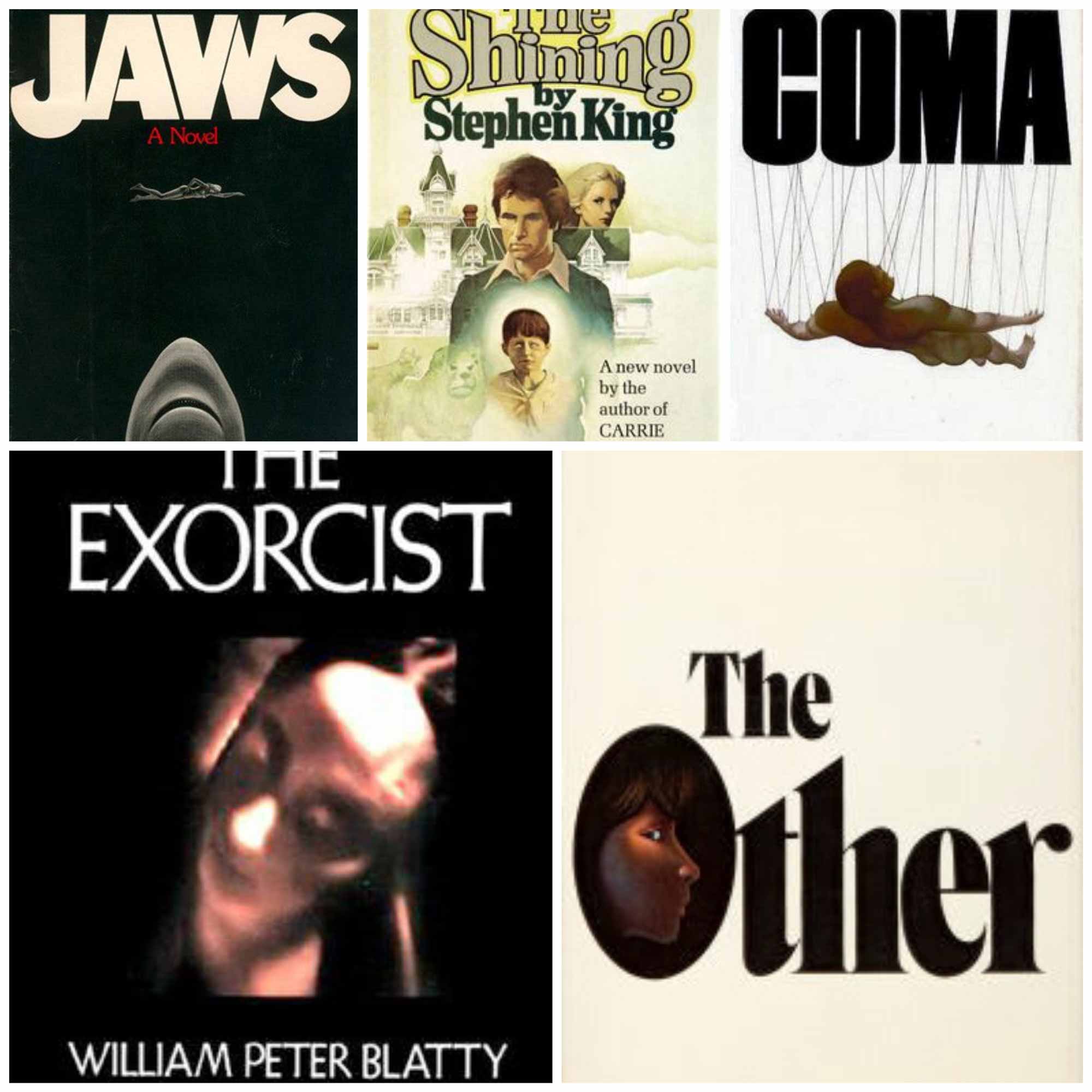

4 comments
Ghost Story by Peter Straub is one of the most unforgettable horror books of the seventies. I reread it and dwell on it more than I can describe. Made into a movie that doesn’t serve its source material well, the book deserves revival and attention.
Thanks Jim. I love Peter Straub’s novels, and Ghost Story is a great read.
I went to a Catholic school and graduated in 1986. Senior year English focused on gothic literature. Started with “The Castle of Otranto” and ended with “The Exorcist”. In between 2 more of the 4 on the list were included, “The Shining” and “The Other”. Your piece makes me want to revisit all 5 here.
Thank you for your comment, Tommy. The 5 books are all worth rereading, and offer a lot of fun on subsequent reads.
Comments are closed.